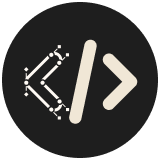What is Design Driven Development?
In today's digital landscape, user experience has become a paramount factor in determining the success of software products. Visually appealing and user-friendly design is not just a superficial aspect but a crucial element for driving user engagement and satisfaction. Design-Driven Development is an approach that recognizes the pivotal role of design in software creation, placing users at the heart of the development process. By integrating design principles and user-centricity throughout the entire development lifecycle, organizations can unlock a multitude of benefits, ranging from improved efficiency and maintainability to enhanced scalability and collaboration within development teams.
Design-Driven Development ensures that the final product meets the needs and expectations of its intended audience. By involving designers, developers, and stakeholders from the early stages of a project, it allows for a collaborative effort where design insights and user feedback significantly influence development decisions. By keeping the end-users in mind throughout the process, Design-Driven Development ensures that the resulting software product is not only functional but also intuitive, engaging, and tailored to their specific requirements.
Efficiency is a key advantage of Design-Driven Development. By aligning the backend structure with the user experience and graphic design, the development process becomes streamlined. With a clear understanding of the required functionality and data flow, frontend and backend developers can work in parallel, minimizing dependencies and reducing development time. This efficient workflow allows for faster iterations, quicker deployment, and ultimately, accelerated time-to-market for the software product.
Scalability and flexibility are also inherent benefits of adopting a design-driven approach. When the backend structure is modeled based on the frontend design, it becomes easier to adapt and evolve the software system. As the frontend design evolves, the backend can seamlessly accommodate new features and functionalities without requiring extensive refactoring. This adaptability ensures that the software product remains scalable and flexible, enabling smooth integration of future enhancements and reducing the risk of disrupting the existing system.
Maintainability is another significant advantage of Design-Driven Development. When the backend structure mirrors the frontend design, the codebase becomes more maintainable and easier to comprehend. The alignment of logic and data flow with the frontend components simplifies code modification and debugging, leading to more efficient maintenance and troubleshooting processes. By promoting a cohesive and well-organized codebase, Design-Driven Development minimizes technical debt and supports long-term sustainability of the software.
Documentation and communication within development teams are greatly enhanced by adopting a design-driven approach. Aligning the backend structure with the frontend design provides a visual representation of the system's architecture, facilitating better understanding and communication among team members. It becomes easier to discuss different components, their interactions, and their visual representation. This shared understanding leads to improved collaboration, effective problem-solving, and efficient knowledge sharing within the development team.
In summary, Design-Driven Development is a powerful approach that places design principles and user-centricity at the core of software creation. By integrating design thinking and practices into the development workflow, organizations can create software products that not only function well but also provide exceptional user experiences. From improved efficiency and maintainability to enhanced scalability and collaboration, the benefits of Design-Driven Development are far-reaching. By prioritizing user needs and continuously refining the design based on user feedback, organizations can deliver software products that not only meet user expectations but also drive higher customer satisfaction and business success.

